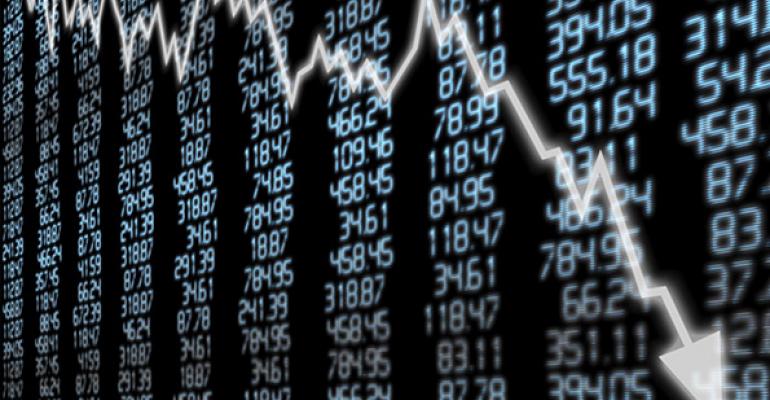The S&P 500 suffered its biggest daily percentage drop in nearly four years on Friday and the Dow confirmed it had entered into correction territory as fears of a China-led global slowdown rattled investors around the world.
A report overnight showed China's manufacturing sector shrank at the fastest pace since 2009, exacerbating worries about the health of its economy and whether the government would take further steps to stem its slowdown.
The Russell 2000 .RUT index of small-cap stocks also confirmed a move into correction territory, a 10-percent decline from its most recent closing high on June 23.
The S&P slumped 5.8 percent for the week, its biggest weekly percentage decline since September 2011.
"People are using China as the main thing as an excuse for selling," said Keith Bliss, senior vice-president at Cuttone & Co in New York.
""A lot of people know this is way overdone. They are just waiting and they are going to step back in next week."
The selloff was broad, with all 10 major S&P sectors in the red. The energy sector was one of the worst performers as U.S. crude oil CLc1 dipped below $40 a barrel for the first time since the 2009 financial crisis. The S&P energy index .SPNY dropped 2.6 percent.
The CBOE Volatility index .VIX, a measure of the premium traders are willing to pay for protection against a drop in the S&P 500, jumped as much as 48.3 percent to 28.38, its highest since October. The index also notched its biggest-ever weekly percentage gain.
Many investors anticipate the U.S. central bank to begin to raise interest rates by the end of the year, although expectations for a September hike were tempered by the minutes from the Federal Reserve's July meeting on Wednesday.
Apple (AAPL.O) fell 4.6 percent to $107.44 as investors continued to fret over its prospects in China, a key market for the iPhone maker. The stock was the biggest drag on the S&P and the Nasdaq.
The Dow Jones industrial average .DJI fell 530.94 points, or 3.12 percent, to 16,459.75, the S&P 500 .SPX lost 64.84 points, or 3.19 percent, to 1,970.89 and the NasdaqComposite .IXIC dropped 171.45 points, or 3.52 percent, to 4,706.04.
For the week, the Dow dropped 5.8 percent and the Nasdaq tumbled 6.8 percent.
The drag from Apple served to push the technology .SPLRCT sector down 4.2 percent. The consumer staples index .SPLRCS fell 2.6 percent, moving into the red for the year. Eight of the 10 S&P sectors are now in negative territory for the year.
Declining issues outnumbered advancing ones on the NYSE by 2,664 to 440, for a 6.05-to-1 ratio; on the Nasdaq, 2,004 issues fell and 823 advanced, for a 2.43-to-1 ratio favoring decliners.
The benchmark S&P 500 posted no new 52-week highs for the first time since Aug. 8, 2011 after S&P downgraded the U.S. credit rating, while there were 75 new lows; the Nasdaq recorded 13 new highs and 276 new lows.
Volume was heavy, with about 10.36 billion shares traded on U.S. exchanges, well above the 6.85 billion average this month, according to BATS Global Markets.
(Reporting by Chuck Mikolajczak; Editing by James Dalgleish and Nick Zieminski)






